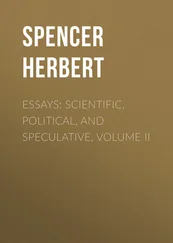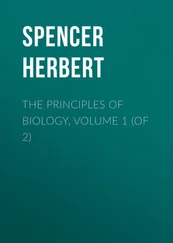See, then, the contrast between the two hypotheses. That of Laplace, looking probable while there were only four planetoids, but decreasing in apparent likelihood as the planetoids increase in number, until, as they pass through the hundreds on their way to the thousands, it becomes obviously improbable, is, at the same time, otherwise objectionable. It pre-supposes a nebulous ring of a width so enormous that it would have overlapped the ring of Mars. This ring would have had differences between the angular velocities of its parts quite inconsistent with the Nebular Hypothesis. The average eccentricities of the orbits of its parts must have differed greatly from those of adjacent orbits; and the average inclinations of the orbits of its parts must similarly have differed greatly from those of adjacent orbits. Once more, the orbits of its parts, confusedly interspersed, must have had varieties of eccentricity and inclination unaccountable in portions of the same nebulous ring; and, during concentration into planetoids, each must have had to maintain its course while struggling through the assemblage of other small nebulous masses, severally moving in ways unlike its own. On the other hand, the hypothesis of an exploded planet is supported by every increase in the number of planetoids discovered; by the greater numbers of the smaller sizes; by the thicker clustering near the inferred place of the missing planet; by the occurrence of the greatest mean distances among the smallest members of the assemblage; by the occurrence of the greatest eccentricities in the orbits of these smallest members; and by the entanglement of all the orbits. Further support for the hypothesis is yielded by aerolites, so various in their kinds, but all suggestive of a planet's crust; by the streams of shooting stars having their radiant points variously placed in the heavens; and also by the solitary shooting stars visible to the naked eye, and the more numerous ones visible through telescopes. Once more, it harmonizes with the discovery of a family of comets, twelve out of thirteen of which have mean distances falling within the zone of the planetoids, have similarly associated periods, have all the same direct motions, and are connected with swarms of meteors and with meteoric streams. May we not, indeed, say, that if there once existed a planet between Mars and Jupiter which burst, the explosion must have produced just such clusters of bodies and classes of phenomena as we actually find?
And what is the objection? Merely that if such an explosion occurred it must have occurred many millions of years ago—an objection which is in fact no objection; for the supposition that the explosion occurred many millions of years ago is just as reasonable as the supposition that it occurred recently.
It is, indeed, further objected that some of the resulting fragments ought to have retrograde motions. It turns out on calculation, however, that this is not the case. Assuming as true the velocity which Lagrange estimated would have sufficed to give the four chief planetoids the positions they occupy, it results that such a velocity, given to the fragments which were propelled backwards by the explosion, would not have given them retrograde motions, but would simply have reduced their direct motions from something over 11 miles per second to about 6 miles per second. It is, however, manifest that this reduction of velocity would have necessitated the formation of highly-elliptic orbits—more elliptic than any of those at present known. This seems to me the most serious difficulty which has presented itself. Still, considering that there remain probably an immense number of planetoids to be discovered, it is quite possible that among these there may be some having orbits answering to the requirement.
Note V. Shortly before I commenced the revision of the foregoing essay, friends on two occasions named to me some remarkable photographs of nebulæ recently obtained by Mr. Isaac Roberts, and exhibited at the Royal Astronomical Society: saying that they presented appearances such as might have been sketched by Laplace in illustration of his hypothesis. Mr. Roberts has been kind enough to send me copies of the photographs in question and sundry others illustrative of stellar evolution. Those representing the Great Nebulæ in Andromeda and Canum Venaticorum as well as 81 Messier are at once impressive and instructive—illustrating as they do the genesis of nebulous rings round a central mass.
I may remark, however, that they seem to suggest the need for some modification of the current conception; since they make it tolerably clear that the process is a much less uniform one than is supposed. The usual idea is that a vast rotating nebulous spheroid arises before there are produced any of the planet-forming rings. But both of these photographs apparently imply that, in some cases at any rate, the portions of nebulous matter composing the rings take shape before they reach the central mass. It looks as though these partially-formed annuli must be prevented by their acquired motions from approaching even very near to the still-irregular body they surround.
Be this as it may, however, and be the dimensions of the incipient systems what they may (and it would seem to be a necessary implication that they are vastly larger than our Solar System), the process remains essentially the same. Practically demonstrated as this process now is, we may say that the doctrine of nebular genesis passes from the region of hypothesis into the region of established truth.
[21]Of course there remains the question whether, before the stage here recognized, there had already been produced a high temperature by those collisions of celestial masses which reduced the matter to a nebulous form. As suggested in First Principles (§ 136 in the edition of 1862, and § 182 in subsequent editions), there must, after there have been effected all those minor dissolutions which follow evolutions, remain to be effected the dissolutions of the great bodies in and on which the minor evolutions and dissolutions have taken place; and it was argued that such dissolutions will be, at some time or other, effected by those immense transformations of molar motion into molecular motion, consequent on collisions: the argument being based on the statement of Sir John Herschel, that in clusters of stars collisions must inevitably occur. It may, however, be objected that though such a result may be reasonably looked for in closely aggregated assemblages of stars, it is difficult to conceive of its taking place throughout our Sidereal System at large, the members of which, and their intervals, may be roughly figured as pins-heads 50 miles apart. It would seem that something like an eternity must elapse before, by ethereal resistance or other cause, these can be brought into proximity great enough to make collisions probable.
[22]The two sentences which, in the text, precede the asterisk, I have introduced while these pages are standing in type: being led to do so by the perusal of some notes kindly lent to me by Prof. Dewar, containing the outline of a lecture he gave at the Royal Institution during the session of 1880. Discussing the conditions under which, if "our so-called elements are compounded of elemental matter", they may have been formed, Prof. Dewar, arguing from the known habitudes of compound substances, concludes that the formation is in each case a function of pressure, temperature, and nature of the environing gases.
[23]At the date of this passage the established teleology made it seem needful to assume that all the planets are habitable, and that even beneath the photosphere of the Sun there exists a dark body which may be the scene of life; but since then, the influence of teleology has so far diminished that this hypothesis can no longer be called the current one.
Читать дальше












